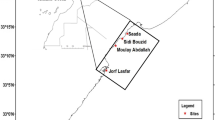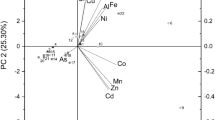Abstract
Zooplankton carcasses are common within aquatic systems and potentially serve as organic-rich substrates for bacteria. We compared the microbial decomposition of representative crustacean (copepod) and non-crustacean (rotifer) zooplankton carcasses and monitored changes in carcass protein and lipid contents. Our results showed that carcass decomposition was mainly driven by bacteria colonizing from the surrounding water. Carcass-associated bacteria displayed higher protease and lipase activities than free-living bacteria. Protein content of copepod carcasses decreased by 70% within the first 8 h and shifted from larger to smaller sized proteins, while protein loss in rotifer carcasses was insignificant. Carcass lipid content did not change significantly over 24 h in either zooplankton type, although polar branched fatty acids increased on copepod carcasses indicating an increase in viable microbial biomass. Our results suggest differential turnover of protein versus lipid within a zooplankton carcass and that carcasses from different zooplankton groups would affect water column microbial processes differently.








Similar content being viewed by others
References
Arnosti C (2004) Speed bumps and barricades in the carbon cycle: substrate structural effects of carbon cycling. Mar Chem 92:263–273
Båmstedt U (1986) Chemical composition and energy content. In: Corner EDS, O’Hara SCM (eds) The biological chemistry of Marine Copepods. Clarendon Press, Oxford, pp 1–58
Bankey LA, Van Veld PA, Borton DL, LaFleur L, Stegeman JJ (1995) Responses of cytochrome P4501A in freshwater fish exposed to bleached kraft mill effluent in experimental stream channels. Can J Fish Aquat Sci 52:439–447
Bradford M (1976) A rapid and sensitive method for the quantitation of microgram quantities of protein utilizing the principle of protein-dye binding. Anal Biochem 72:248–254
Chen F, Lu JR, Binder BJ, Liu YC, Hodson RE (2001) Application of digital image analysis and flow cytometry to enumerate marine viruses stained with SYBR gold. Appl Environ Microbiol 67:539–545
Chiba S, Horimoto N, Satoh R, Yamaguchi Y, Ishimaru T (1998) Macrozooplankton distribution around the Antarctic divergence off Wilkes Land in the 1996 Austral summer: with reference to high abundance of Salpa thompsoni. Proc NIPR Symp Polar Biol 11:33–50
de Araujo AB, Snell TW, Hagiwara A (2000) Effect of unionized ammonia, viscosity and protozoan contamination on the enzyme activity of the rotifer Brachionus plicatilis. Aquacult Res 31:359–365
Ding H, Sun M-Y (2005) Biochemical degradation of algal fatty acids in oxic and anoxic sediment—seawater interface systems: effects of structural association and relative roles of aerobic and anaerobic bacteria. Mar Chem 93:1–19
Dolan JR, Gallegos CL (1991) Trophic coupling of rotifers, microflagellates, and bacteria during fall months in the Rhode River Estuary. Mar Ecol Prog Ser 77:147–156
Dolan JR, Gallegos CC (1992) Trophic role of planktonic rotifers in the Rhode River Estuary, spring—summer 1991. Mar Ecol Prog Ser 85:187–199
Elliott DT, Tang KW (2009) Simple staining method for differentiating live and dead marine zooplankton in field samples. Limnol Oceanogr Methods 7:585–594
Elliott DT, Harris CK, Tang KW (2010) Dead in the water: the fate of copepod carcasses in the York River estuary, Virginia. Limnol Oceanogr (in revision)
Gillan FT, Johns RB (1986) Chemical markers for marine bacteria: fatty acids and pigments. In: Johns RB (ed) Biological markers in the sedimentary record. Elsevier, Amsterdam, pp 291–309
Grossart H-P, Ploug H (2001) Microbial degradation of organic carbon and nitrogen on diatom aggregates. Limnol Oceanogr 46:267–277
Hansen B, Bech G (1996) Bacteria associated with a marine planktonic copepod in culture. I. Bacterial genera in seawater, body surface, intestines and fecal pellets and succession during fecal pellet degradation. J Plankton Res 18:257–273
Harding GCH (1973) Decomposition of marine copepods. Limnol Oceanogr 18:670–673
Harvey HR, Tuttle JH, Bell JT (1995) Kinetics of phytoplankton decay during simulated sedimentation: changes in biochemical composition and microbial activity under oxic and anoxic conditions. Geochim Cosmochim Acta 59:3367–3377
Holst H, Zimmermann H, Kausch H, Koste W (1998) Temporal and spatial dynamics of Planktonic Rotifers in the Elbe Estuary during Spring. Estuar Coast Shelf Sci 47:261–273
Honjo S, Roman MR (1978) Marine copepod fecal pellets: production, preservation and sedimentation. J Mar Res 36:45–57
Hoppe H-G (1983) Significance of exoenzymatic activities in the ecology of brackish water: measurements by means of methylumbelliferyl-substrates. Mar Ecol Prog Ser 11:299–308
Jacobsen TR, Azam F (1984) Role of bacteria in fecal pellet decomposition: colonization growth rates and mineralization. Bull Mar Sci 35:495–502
Kimmel DG, Roman MR (2004) Long-term trends in mesozooplankton abundance in Chesapeake Bay, USA: influence of freshwater input. Mar Ecol Prog Ser 267:71–83
Kirchner M (1995) Microbial colonization of copepod body surfaces and chitin degradation in the sea. Helgolander Meeresuntersuchungen 49:201–212
Kleinow W (1993) Biochemical studies on Brachionus plicatilis: hydrolytic enzymes, integument proteins and composition of trophi. Hydrobiologia 255(256):1–12
Kleinow W, Wratil H (1995) SEM of internal structures of Brachionus plicatilis (Rotifera). Hydrobiologia 313(314):129–132
Lee LD, Kubilus J, Baden HP (1979) Intraspecies heterogeneity of Epidermal keratins isolated from Bovine Hoof and Snout. Biochem J 177:187–196
Libes SM (1992) Production and destruction of organic compounds in the sea. In: Libes SM (ed) An introduction to marine biogeochemistry. Wiley, New York, pp 394–422
Loeb V, Siegel V, Holm-Hansen O, Hewitt R, Fraser W, Trivelpiece W, Trivelpiece S (1997) Effects of sea-ice extent and krill or salp dominance on the Antarctic foodweb. Nature 387:897–900
Mudryk ZJ, Skórczewski P (2006) Enzymatic activity and degradation of organic macromolecules by neustonic and planktonic bacteria in an estuarine lake. Pol J Ecol 54:3–14
Øie G, Makridis P, Reitan KI, Olsen Y (1997) Protein and carbon utilization of rotifers (Brachionus plicatilis) in first feeding of turbot larvae (Scophthalmus maximus L.). Aquaculture 153:103–122
Park GS, Marshall HG (2000) The trophic contributions of rotifers in tidal freshwater and estuarine habitats. Estuar Coast Shelf Sci 51:729–742
Ploug H (2001) Small-scale oxygen fluxes and remineralization in sinking aggregates. Limnol Oceanogr 46:1624–1631
Poerschmann J, Carlson R (2006) New fractionation scheme for lipid classes based on “in-cell fractionation” using sequential pressurized liquid extraction. J Chromatogr A 1127:18–25
Porter KG, Feig YS (1980) The use of DAPI for identification and enumeration of bacteria and blue-green algae. Limnol Oceanogr 13:389–398
Reinfelder JR, Fisher NS, Fowler SW, Teyssié J-L (1993) Release rates of trace elements and protein from decomposing planktonic debris. 2. Copepod carcasses and sediment trap particulate matter. J Mar Res 51:423–442
Riemann L, Titelman J, Båmstedt U (2006) Links between jellyfish and microbes in a jellyfish dominated fjord. Mar Ecol Prog Ser 325:29–42
Sampei M, Sasaki H, Hattori H, Forest A, Fortier L (2009) Significant contribution of passively sinking copepods to the downward export flux in Arctic waters. Limnol Oceanogr 54:1894–1900
Simon M, Azam F (1989) Protein content and protein synthesis rates of planktonic marine bacteria. Mar Ecol Prog Ser 51:201–213
Simon M, Grossart H-P, Schweitzer B, Ploug H (2002) Microbial ecology of organic aggregates in aquatic ecosystems. Aquat Microb Ecol 28:175–211
Štrojsová M, Ahlrichs WH (2009) Differentiation between activity of digestive enzymes of Brachionus calyciflorus and extracellular enzymes of its epizootic bacteria. J Limnol 68:1–4
Štrojsová M, Vrba J (2005) Direct detection of digestive enzymes in planktonic rotifers using enzyme-labelled fluorescence (ELF). Mar Freshwater Res 56:189–195
Tang KW, Dam HG, Visscher PT, Fenn TD (1999) Dimethylsulfoniopropionate (DMSP) in marine copepods and its relation with diets and salinity. Mar Ecol Prog Ser 179:71–79
Tang KW, Freund CS, Schweitzer CL (2006a) Occurrence of copepod carcasses in the lower Chesapeake Bay and their decomposition by ambient microbes. Estuar Coast Shelf Sci 68:499–508
Tang KW, Hutalle KML, Grossart H-P (2006b) Microbial abundance, composition and enzymatic activity during decomposition of copepod carcasses. Aquat Microb Ecol 45:219–227
Tang KW, Freund CS, Parrish AN, Bickel SL (2007) A simple staining method for differentiating live and dead copepods in natural samples. (conference abstract) Estuarine Research Federation, Providence, November
Tang KW, Bickel SL, Dziallas C, Grossart H-P (2009) Microbial activities accompanying decomposition of cladoceran and copepod carcasses under different environmental conditions. Aquat Microb Ecol 57:89–100
Titelman J, Riemann L, Sørnes TA, Nilsen T, Griekspoor P, Båmstedt U (2006) Turnover of dead jellyfish: stimulation and retardation of microbial activity. Mar Ecol Prog Ser 325:43–58
Van Veld PA, Westbrook DJ (1995) Evidence for depression of cytochrome P4501A in a population of chemically resistant mummichog (Fundulus heteroclitus). Environ Sci 3:221–234
Williams CJ, Jochem FJ (2006) Ectoenzyme kinetics in Florida Bay: implications for bacterial carbon source and nutrient status. Hydrobiologia 569:113–127
Acknowledgments
This study was supported by United States National Science Foundation OCE-0814558, Jeffrees Memorial Trust J-895, and Virginia Institute of Marine Science graduate fellowship. We thank Dr. E. Canuel and E. Ferer for help with lipid extraction and analysis, B. Rutan for help with protein analysis, M. Lynch and C. Freund for technical assistance. This is contribution number 3079 of the Virginia Institute of Marine Science.
Author information
Authors and Affiliations
Corresponding author
Additional information
Communicated by M. Kühl.
Rights and permissions
About this article
Cite this article
Bickel, S.L., Tang, K.W. Microbial decomposition of proteins and lipids in copepod versus rotifer carcasses. Mar Biol 157, 1613–1624 (2010). https://doi.org/10.1007/s00227-010-1434-4
Received:
Accepted:
Published:
Issue Date:
DOI: https://doi.org/10.1007/s00227-010-1434-4




